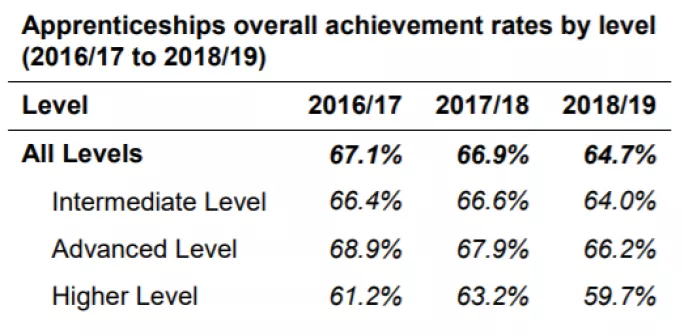The apprenticeship achievement rate has dropped by 2.2 percentage point in a year, new figures have shown. The figures indicate this is due to a drop in retention rates, but could also be linked to staff churn in different employment sectors.
National achievement rate tables for 2019-20, published by the Department for Education this morning, highlight that “changes in achievement rates are dependent on a combination of retention rates and pass rates”.
Need to know: DfE ‘happy for apprentice providers to go bust’
Emma Hardy: ‘Please don’t make apprentices redundant’
Gillian Keegan’s letter: read in full
Continued employment
The DfE states: “Pass rates remain similar to last year. The apprenticeship [qualification achievement rates] measure is additionally reliant on the person’s continued employment and in some sectors there is higher churn so caution should be used interpreting simple averages because changes in provision mix across sectors will lead to change in overall averages.”
According to the new data, the overall achievement rates for each level have shown a slight decline between 2017-18 and 2018-19.
“However, this is partially explained by the increase in learners completing apprenticeship standards compared to earlier years,” the DfE states.
“The achievement rate for apprenticeship frameworks increased by 1.4 percentage points and that for apprenticeship standards increased by 8.5 percentage points. The cohort for apprenticeship standards increased from 6,260 in 2017-18 to 54,590 in 2018-19.
“Overall, achievement rates within the 19-plus education and training cohort increased from 88.3 per cent in 2017-18 to 89.1 per cent in 2018-19, the figures also show. “Compared with 2016-17 they are up by 2.2 percentage points. Rates have increased at all levels since 2017-18 with the exception of level 3 which has shown a slight decrease.”





